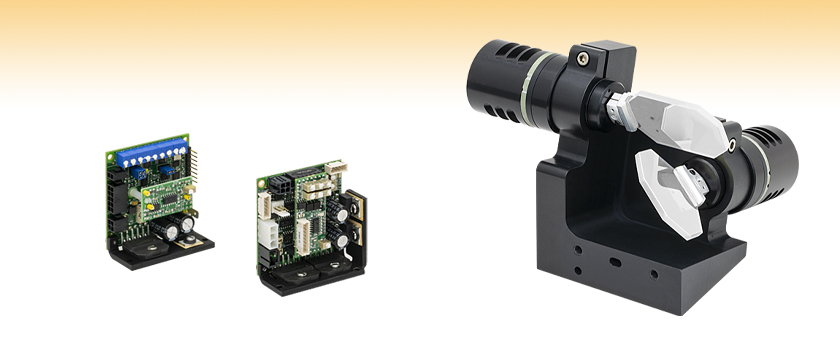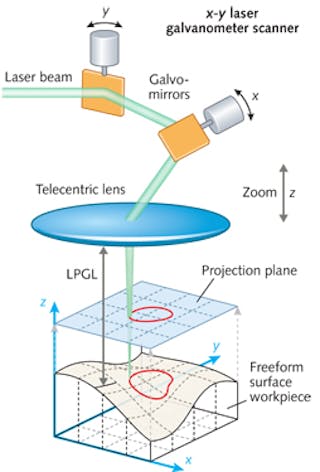Just How a Galvanometer Scanner Improves Performance in Laser Scanning Technologies
The combination of galvanometer scanners in laser scanning innovations stands for a pivotal improvement in accuracy engineering. By facilitating exact and fast changes of laser light beam instructions, these tools substantially improve functional efficiency throughout numerous applications, from clinical imaging to industrial engraving.
Comprehending Galvanometer Scanners
A galvanometer scanner is a sophisticated tool that leverages electromagnetic concepts to accomplish exact angular motion of mirrors or other reflective surfaces. These scanners run with the interaction of an electric current and a magnetic field, allowing rapid and accurate placing. This innovation is essential in applications requiring high-speed scanning, such as laser inscription, optical communication, and clinical imaging.

Galvanometer scanners are usually characterized by their rapid action times and high angular resolution, making them perfect for applications that demand rapid activities and accurate positioning. Their reliability and performance make them an important component in modern-day laser scanning modern technologies, contributing considerably to improvements in numerous fields, including production, healthcare, and telecoms.
Mechanism of Laser Light Beam Control

The control device counts on closed-loop feedback systems that continuously keep track of the beam of light's placement. The signals from optical sensing units provide real-time data to the control system, permitting quick adjustments to preserve accuracy. This is important in applications where also mild deviations can jeopardize the high quality of the check or engraving.
Additionally, the galvanometer's feedback time is paramount; high-speed electric motors enable swift movements, making sure that the laser beam can quickly trace complex patterns or execute complex procedures. The combination of electronic signal processing better boosts the responsiveness and accuracy of the galvanometer scanner. On the whole, the system of laser beam of light control through galvanometer scanners exhibits the blend of innovative design and innovation, producing high-performance outcomes in laser scanning applications.
Advantages of Boosted Precision
Enhanced accuracy in laser scanning technologies provides significant benefits across numerous applications, from commercial manufacturing to medical procedures. The assimilation of galvanometer scanners enables highly precise light beam positioning, which is essential for jobs requiring thorough detail. This boosted precision makes certain that the laser can target details locations with minimal variance, causing premium high quality end results.
In industrial contexts, precise laser scanning leads to enhanced product consistency and decreased material waste. In clinical applications, the accuracy of laser procedures can considerably impact client end results.
Furthermore, enhanced precision promotes innovative applications such as 3D imaging and microfabrication, where also minute errors can lead to substantial mistakes. By giving reputable and repeatable laser positioning, galvanometer scanners contribute to the general efficiency and effectiveness of laser systems. In summary, the benefits of improved precision not only improve operational performance but also boost the criteria of quality and safety in numerous fields.
Applications in Numerous Industries
The versatility of galvanometer scanners in laser scanning modern my blog technologies expands throughout multiple sectors, each taking advantage of the precision they give. In the clinical area, these scanners are critical in applications such as laser surgical treatment and imaging, permitting highly exact targeting of tissues while reducing damage to surrounding locations - galvanometer scanner. Their fast response and fine resolution are important in producing high-quality outcomes
In the production market, galvanometer scanners improve processes like laser inscription and cutting. Their capability to swiftly direct laser light beams onto surfaces allows efficient assembly line, improving rate and precision in creating detailed designs or parts.
The vehicle market also maximizes galvanometer innovation for quality assurance and examinations (galvanometer scanner). By employing high-speed scanning, makers can find issues in settings up or products, ensuring that items fulfill strict criteria
In addition, in the enjoyment sector, galvanometer scanners are utilized in laser light programs and screens, offering dynamic aesthetic experiences with precise control over laser activities.
Future Patterns in Laser Scanning
Arising technologies are poised to reinvent the landscape of laser scanning, with galvanometer scanners at the leading edge of this makeover. As industries progressively require accuracy and performance, the evolution of galvanometer go technology will certainly drive considerable innovations in laser scanning applications.
Future fads show an expanding integration of fabricated knowledge and machine knowing algorithms, which will certainly boost information processing capacities and automate decision-making in real-time. This synergy will allow for much more innovative evaluation of checked information, bring about improved precision in applications such as 3D modeling and self-governing navigating.
Moreover, the miniaturization of components and the development of innovative materials will add to lighter, more mobile laser scanning systems. This mobility will certainly increase the reach of laser scanning modern technologies right into formerly unattainable environments, such as remote terrain and intricate building rooms.
The rise of increased fact (AR) and online reality (VR) applications will additionally form the future of laser scanning. By combining galvanometer scanners with AR and VR, users will certainly take advantage of immersive experiences that enhance visualization and job planning.
Conclusion
To conclude, galvanometer scanners play a crucial function in enhancing laser scanning innovations through their specific control of beam direction and rapid angular changes. The combination of advanced comments systems and optical sensors significantly boosts operational speed and precision, resulting in improved results in applications such as laser inscription and medical imaging. As sectors increasingly take on these technologies, the continuous developments in galvanometer scanner layouts are expected to more elevate efficiency standards and widen application possibilities.
The combination of galvanometer scanners in laser scanning modern technologies represents a pivotal improvement in precision design. In general, the device of laser beam control with galvanometer scanners exhibits the combination of innovative engineering and technology, producing high-performance outcomes visit their website in laser scanning applications.
By supplying dependable and repeatable laser positioning, galvanometer scanners add to the overall effectiveness and performance of laser systems.The flexibility of galvanometer scanners in laser scanning technologies prolongs throughout multiple industries, each profiting from the precision they give.In conclusion, galvanometer scanners play a critical duty in maximizing laser scanning modern technologies through their accurate control of beam of light direction and quick angular adjustments.
Comments on “Fixing Typical Problems with Your Galvanometer Scanner: Advice”